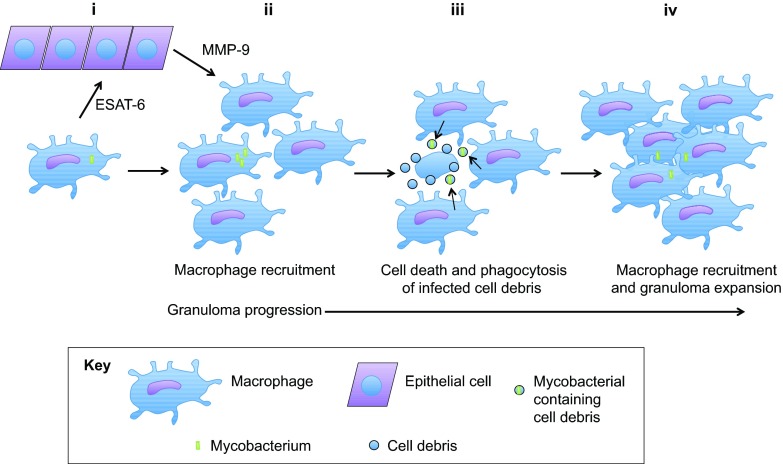Fig. 3.
Macrophage recruitment and granuloma formation during mycobacterial infection. (i) ESAT-6 released from an infected macrophage drives MMP-9 production in surrounding epithelial cells. (ii) MMP-9-dependent and -independent signals drive recruitment of surrounding macrophages to the infected macrophage. (iii) The infected macrophage undergoes cell death, releasing infected cell debris. This infected cell debris is phagocytosed by recruited macrophages, expanding the population of infected macrophages. (iv) The newly infected macrophages continue to recruit additional macrophages through MMP-9-dependent and -independent mechanisms, as in panels i and ii, and ongoing cell death of infected macrophages continues to expand bacterial infection to recruited macrophage populations. As these processes continue, these infected and uninfected macrophages aggregate to form granulomas.

